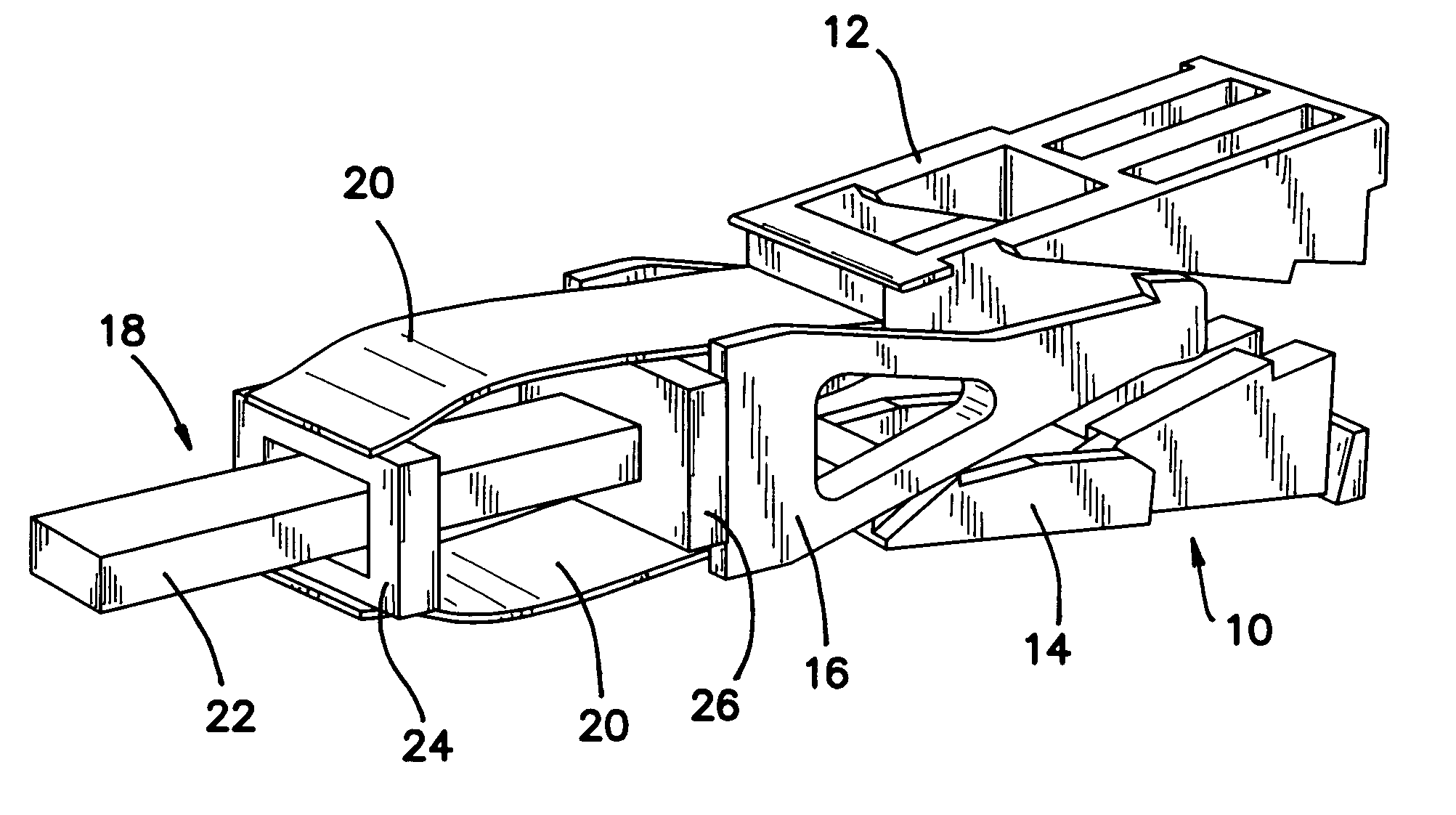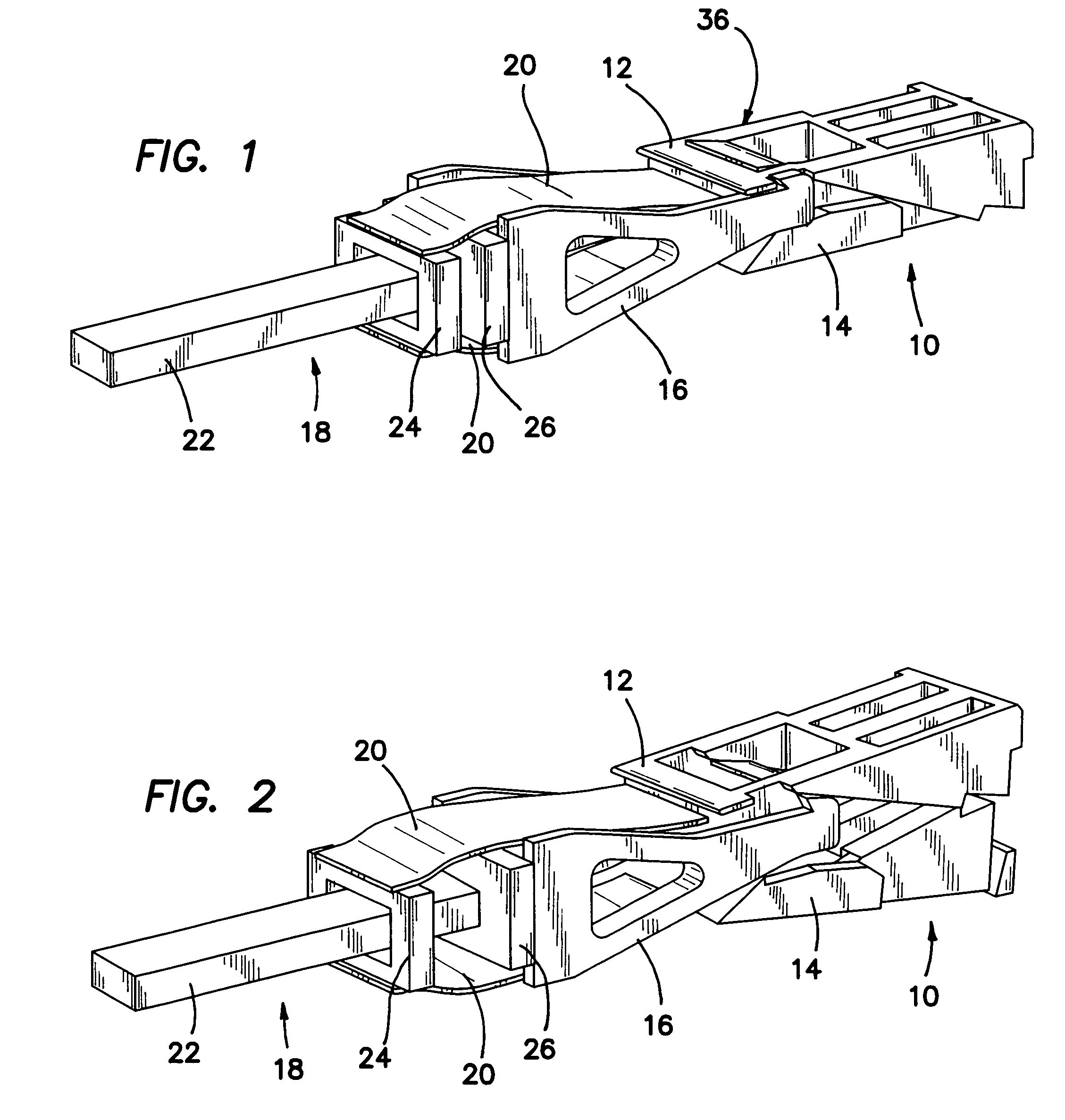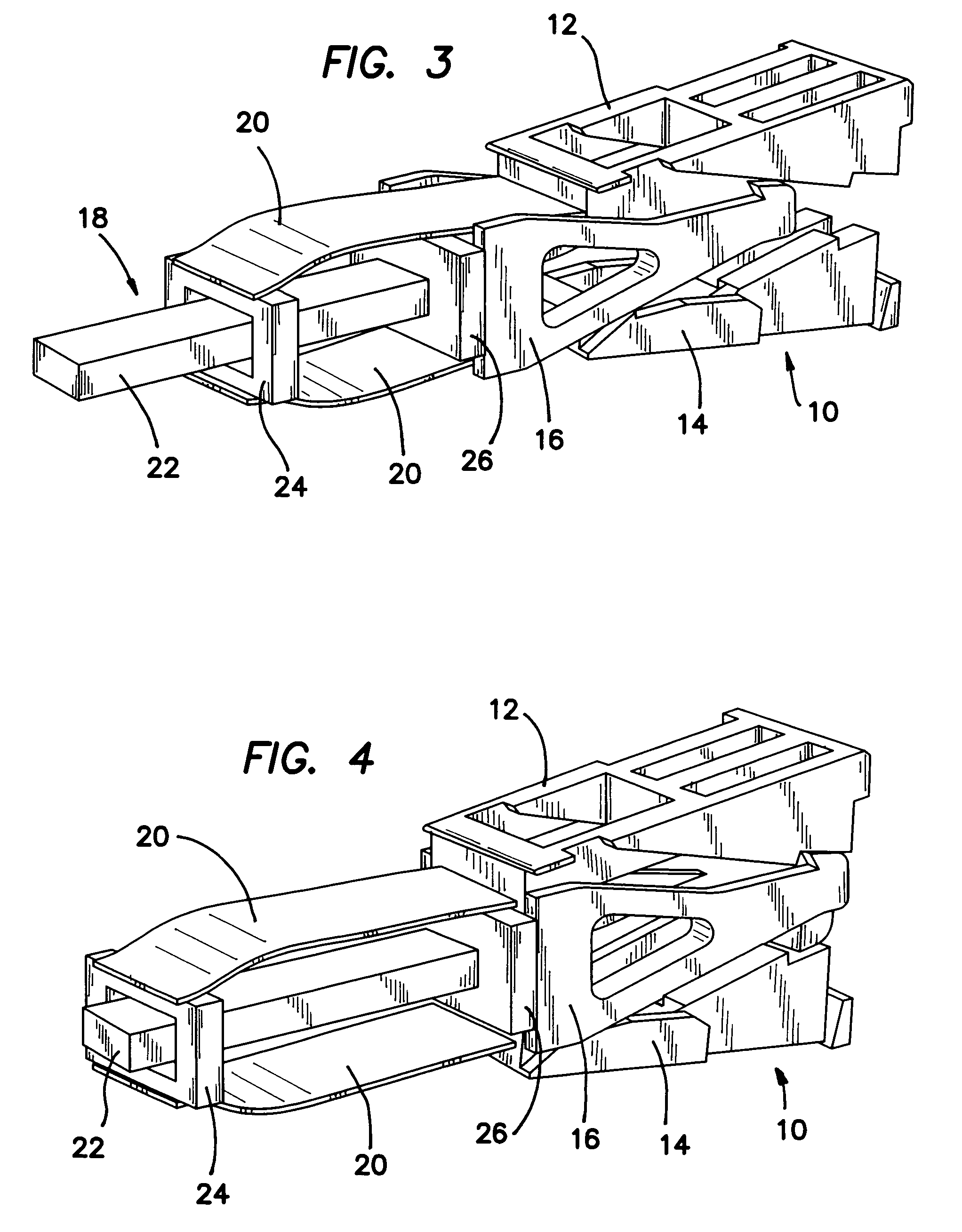Posterior lumbar interbody fusion expandable cage with lordosis and method of deploying the same
a lordosis and expandable cage technology, applied in the field of posterior lumbar fusion cages, can solve the problems of all the standard approaches, neural injury, nerve damage and potential neurologic deficit,
- Summary
- Abstract
- Description
- Claims
- Application Information
AI Technical Summary
Benefits of technology
Problems solved by technology
Method used
Image
Examples
Embodiment Construction
[0060] The spinal fusion cage 10 as best shown in assembled perspective view of FIG. 5 is comprised of two half-cages 12 and 14 and a middle plunger 16 which is slid between the half-cages 12 and 14 by means of a removable pusher tool 18. It should be borne in mind that during the sequence of steps illustrated in FIGS. 1-6 that half-cages 12 and 14 will be inserted into the spinal column between two adjacent vertebrae and hence will tend to pushed together by the vertebrae. The assembly of fusion cage 10 is then done against the opposing force of the adjacent vertebrae, which will be fused together in a predetermined position with a predetermined relative angle between them as provided by the invention.
[0061] Turning first to the unassembled perspective view of FIG. 1 we see that the pusher tool 18 is coupled to the plunger 16 by two opposing leaf springs 20 that clasp opposing top and bottom sides of the plunger 16 and slide off the plunger 16 as it is forced between the two half-...
PUM
 Login to View More
Login to View More Abstract
Description
Claims
Application Information
 Login to View More
Login to View More - R&D
- Intellectual Property
- Life Sciences
- Materials
- Tech Scout
- Unparalleled Data Quality
- Higher Quality Content
- 60% Fewer Hallucinations
Browse by: Latest US Patents, China's latest patents, Technical Efficacy Thesaurus, Application Domain, Technology Topic, Popular Technical Reports.
© 2025 PatSnap. All rights reserved.Legal|Privacy policy|Modern Slavery Act Transparency Statement|Sitemap|About US| Contact US: help@patsnap.com



